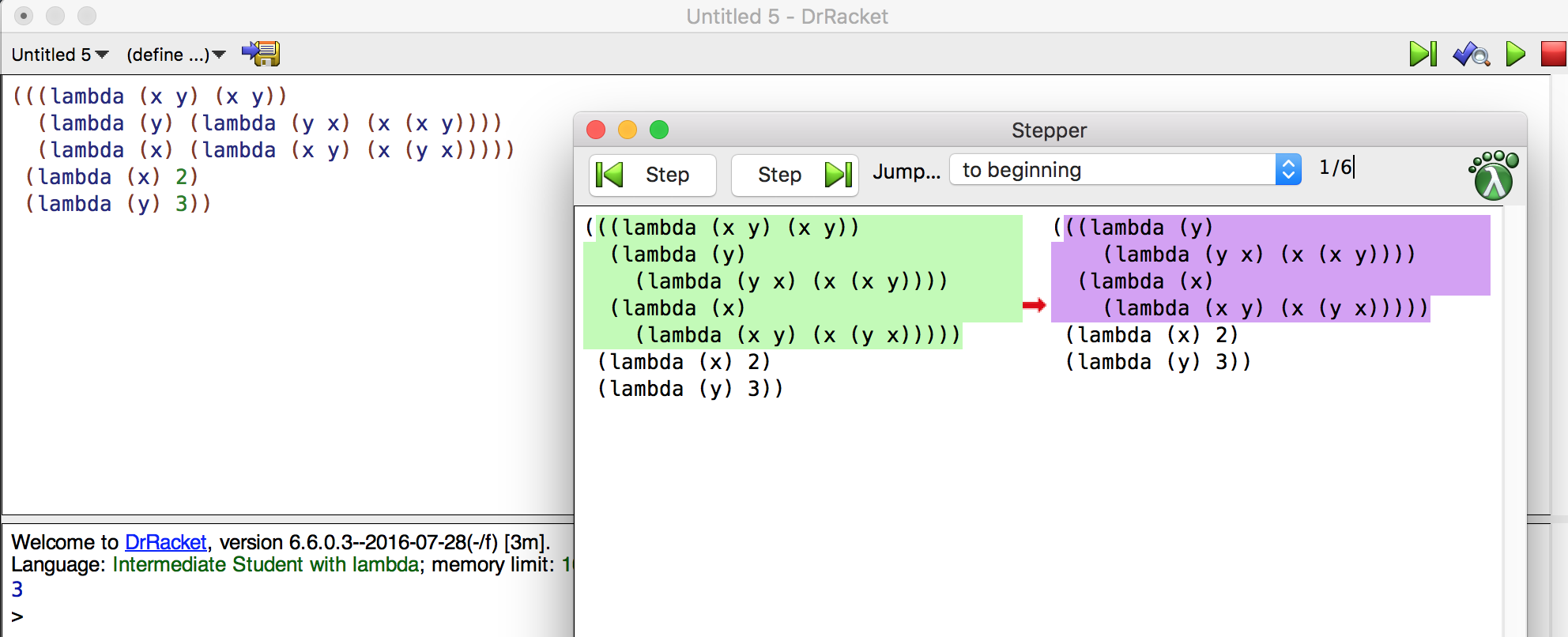The following question is given in our Programming language practice exam and I am having a hard time understating how this works. Could someone tell me what the flow of code is? I have run it in racket and know what the answer is. It looks like the first lambda function is taking the other two functions as argument. But then where are the inputs (lambda (x) 2) and (lambda (y) 3) passed to?
(((lambda (x y) (x y))
(lambda (y) (lambda (y x) (x (x y))))
(lambda (x) (lambda (x y) (x (y x)))))
(lambda (x) 2)
(lambda (y) 3))
The answer to the question is 3.

